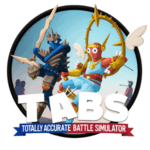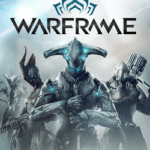1. Origins and Early Development (2006–2014)
Rust began in 2006 when Mozilla engineer Graydon Hoare initiated it to solve memory management issues in systems programming. Named after resilient fungi, Rust prioritized sound borrow-checking mechanisms and memory safety without garbage collection. Between 2006 and 2009, the compiler was written in OCaml, introducing features like object safety and typestate tracking. By 2009, the project grew within Mozilla; its public debut followed. Rust’s 1.0 release in May 2015 signaled production readiness, emphasizing performance, zero-cost abstractions, and developer ergonomics.
2. Core Design – Memory Safety and Ownership
Rust’s signature feature is its ownership system enforced at compile time. With unique (&mut) and shared (&) references, Rust statically prevents null dereferencing, dangling pointers, and data races. Unsafe code is possible but explicitly marked, allowing low-level operations while keeping most code safe.
Borrow Checker in Action
This system guarantees that shared memory cannot be mutated while referenced elsewhere, eliminating race conditions before runtime.
No Garbage Collection
Rust’s RAII model manages memory at compile time—no GC pauses—making it ideal for performance-critical applications.
3. Growth and Ecosystem – From Foundation to Mainstream
Backed by founding members like AWS, Google, Huawei, Microsoft, and Mozilla, the Rust Foundation (established in 2021) supports language infrastructure, trademark management, grants, and core development. Major open-source projects powered by Rust include Firefox’s Servo components, Linux kernel modules, AWS Firecracker, Cloudflare’s Pingora proxy, and Google's adoption in Chromium.
Crates.io hosts over 100,000 community libraries catering to areas such as networking (Tokio), web frameworks (Axum, Actix), machine learning, game engines (Bevy), embedded systems, and Wasm targets.
4. 2023–2025: Cutting-Edge Language Features
Tooling and Project Milestones
Rust introduces frequent updates: Rust 1.70 stabilized OnceCell and OnceLock, and Cargo improved sparse indexing. The 2025H1 roadmap includes flagship goals such as stable async-trait in traits, full support for async closures/generators, and better ergonomics for Pin.
Async Improvements
By March 2025, async traits and closures are now first-class and ergonomic, cracking open new possibilities for async library authors.
5. Performance, Concurrency, and Safety
Rust’s zero-cost abstractions, no GC, and LLVM backend deliver performance on par with C/C++—benchmarks confirm it excels in compute-intensive tasks. Concurrency is safe by design—ownership and type system prevent data races. Its deterministic memory behavior is ideal for servers, real-time systems, WebAssembly, and embedded devices.
6. Real-World Adoption and Industry Impact
Major Platforms
Linux kernel: Rust drivers merged in kernel 6.8 to boost memory safety in system code.
Browsers: Servo/CSS engine in Firefox and Rust’s inclusion in Chromium for safer code.
Cloud and Embedded
AWS uses Rust for Firecracker (microVMs); Azure IoT Edge and embedded programming thrive via Rust Embedded Working Group. Cloudflare’s Pingora is yet another Rust-powered server project.
7. Frameworks and Tools Beyond the Core
Tokio: premier async I/O runtime.
Tauri: lightweight cross-platform GUI apps using Rust backend and WebView-frontend (v2.2.5 released Jan 2025).
Cranelift: JIT compiler backend for Wasmtime, used in Wasm services.
These tools enhance the ecosystem’s depth, enabling UI apps, server workloads, and embedded/IoT platforms.
8. Limitations and Pain Points
Learning Curve and Compilation Speed
Rust’s borrow checker is powerful—but difficult for beginners. Compilation can be slow with large projects, especially GUI frameworks like Tauri.
Ecosystem Gaps
Despite strides, GUI frameworks are less mature than in C++ or Electron worlds. Mobile-first support remains nascent.
Adoption Friction
Adopting Rust in existing C++ codebases involves FFI overhead and team adaptation. Scripting-driven prototyping is slower.
9. Cutting-Edge Research and Compiler Evolution
Garbage Collection via Alloy
A new 2025 proposal, Alloy explores optional GC using finalizers to support shared data structures without invalidating Rust’s safety guarantees, though it introduces performance and safety trade-offs.
HALURust for Vulnerability Detection
Innovative LLM-based frameworks like HALURust detect vulnerabilities in Rust by intentionally generating hallucinated bug reports—outperforming traditional vulnerability scanners.
Unsafe API Documentation
Efforts like "Fearless Unsafe" aim to categorize and simplify documentation for unsafe APIs via Rust Analyzer plugins—improving auditability and developer confidence.





























